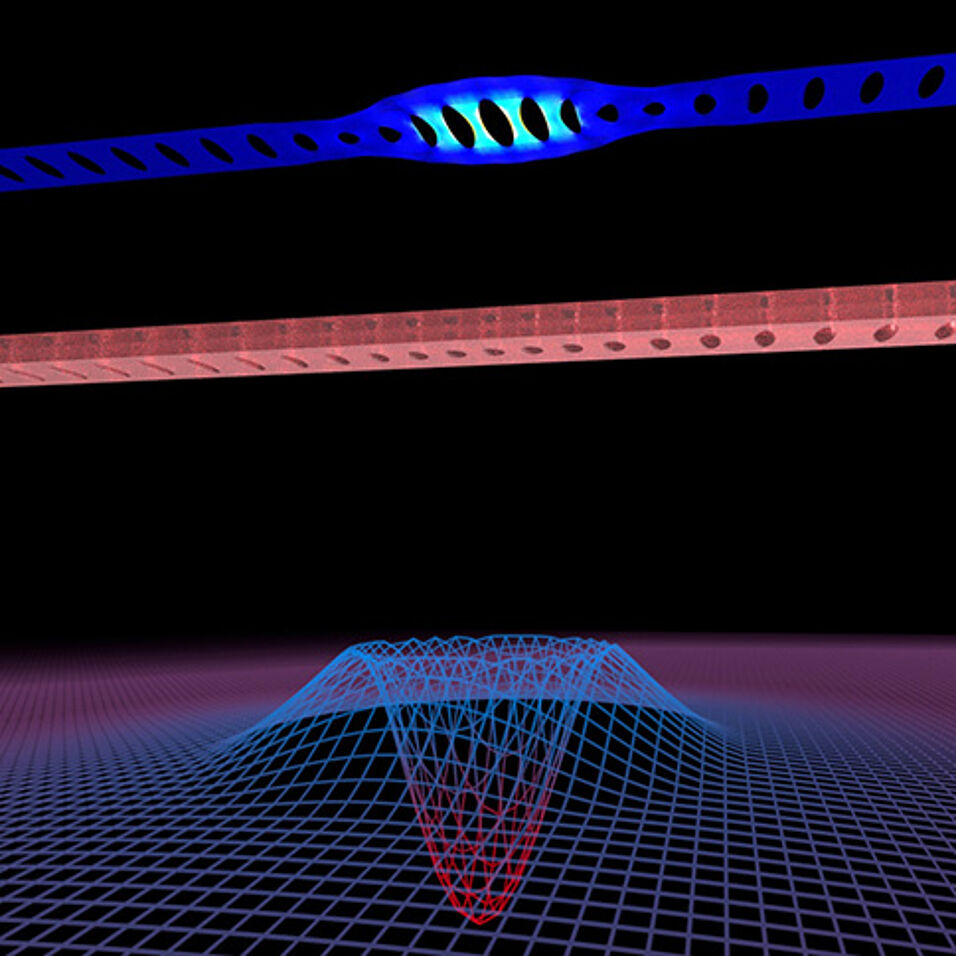Vibrations, such as those of a bridge, a guitar string or a tuning fork, behave like waves, swinging back and forth continuously. Yet, quantum mechanics predicts that this motion in fact consists of tiny discrete packages of energy, called phonons. A team of researchers at the TU Delft and the University of Vienna now demonstrate a new level of quantum control over these vibrations using laser pulses. They create individual phonon excitations and confirm their fundamental particle aspect, adapting a well-known test from quantum optics. They report on their results on Thursday September 21st, in the online edition of Science.
Hanbury Brown and Twiss experiment with vibrations
One of the seminal tests of the particle character of light is the Hanbury Brown and Twiss experiment. In essence, it is based on the fact that the fundamental energy packages cannot be split, e.g. at a semitransparent mirror, but must either be fully transmitted or fully reflected. It shows unambiguously the particle aspect of light, a genuine quantum feature. Prof. Markus Aspelmeyer (University of Vienna) explains: “We have adapted the ideas of this experiment to look at the particle character of phonons instead of light.”
Little beam
“The device we use consists of a micrometer-sized mechanical silicon beam”, says prof. Simon Gröblacher, who works at the Kavli Institute of Nanoscience at the TU Delft and who led the team of researchers together with prof. Aspelmeyer. “The beam is patterned in such a way that its vibrations can be ‘written’ onto laser pulses traveling through it and vice versa”, Gröblacher adds. “The beam is initially cooled in a cryostat such that it has no vibrational energy left. We then use laser pulses that can either add or extract energy from the beam. First, a weak laser pulse pushes the nanobeam slightly, creating a single mechanical vibration, and at the same time releases a photon of different frequency. We then measure this excitation by using a second strong pulse and confirm that the mechanical motion is indeed quantized.”
For a classical oscillation this Hanbury Brown and Twiss experiment would result in autocorrelations larger than 1, indicating that the energy of the wave packages is split. “We clearly see a value below 1, which confirms the particle nature of the oscillator”, says Prof. Aspelmeyer. “The creation and verification of single phonons is an important step towards full optical quantum control of mechanical motion.”
Quantum states of billions of atoms
The vibrating nanobeam consists of eight billion atoms, has the size of a small cell and can therefore easily be seen in a magnifying glass or microscope. As the technique employed by the scientists to generate and verify quantum states of motions can be applied to such relatively large systems, it could directly lead to tests on whether the counterintuitive laws of quantum mechanics also apply to large objects. “This question has been discussed since the early days of quantum theory”, Gröblacher explains. “The famous Schrödinger Cat thought-experiment is the most prominent example of this question.”
Global quantum network
Beyond the fundamental aspects, the micromechanical beams are very promising candidates for building blocks for integrated quantum information processing with phonons. For the fabrication of the devices, the same technology is used as for integrated silicon photonics. The measurements are already performed with lasers at telecom wavelengths, so quantum information can easily be transferred over large distances. In addition, the small feature size of such phononic circuits allows for high integration and complete engineerability of its properties. These qualities makes them the perfect building blocks for a future global quantum network, featuring superconducting microwave qubits and telecom laser light for the information transfer.

